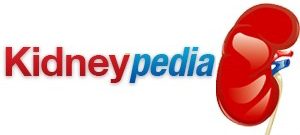The glomerular filtration rate (GFR) is a measure of the functioning of the kidneys. The primary function of the kidneys is to filter impurities and excess liquid from the blood, depositing these substances in urine and expelling them from the body through the urinary system. The GFR is the most sensitive and accurate measure of kidney function available. In contrast, other useful measures such as blood urea nitrogen (BUN) and creatinine clearance will not show abnormalities unless and until some sixty percent of kidney function is lost.
Definition
The glomelular filtration rate is defined as the volume of fluid filtered through the glomerular capillaries of the kidneys into the Bowman’s capsule over a given time. The two parts of this process, the glomerulus and the Bowman’s capsule, constitute together a nephron which is the structure within the kidney that does the processing of blood.
The glomerulus is what might be called the “working engine” of the kidneys. It consists of a bundle of capillaries that expose blood under pressure to a surrounding filter membrane, so that fluids and solids are forced out of the blood and into the Bowman’s capsule that surrounds the glomerular capillaries.
Normal Rate
The rate at which this occurs is a good measure of the functioning health of the kidneys. Normally, the kidneys process some 200 liters of blood per day and generate 2 liters of urine as a result.
How GFR Is Calculated And Measured
The GFR is measured by reference to any substance that is maintained at a constant level in the blood and neither reabsorbed by the blood nor secreted by the kidneys except in excess. The amount of the substance that is concentrated in the urine after a period of time is used to calculate the GFR, using the formula;
GFR = (urine concentration x urine flow) / plasma concentration
Insulin is a common substance to use in direct calculation of the GFR. The GFR can also be measured indirectly by measurement of creatinine levels, although this is not as precise a method of calculation. (This latter is a more common procedure because it is easier to do, and patients with suspected chronic kidney disease in its early stages may be prescribed a blood or urine test that can allow approximation of the GFR rather than a full GFR screen, which requires injection with a substance to be filtered by the kidneys. The latter procedure may be undertaken in later stage kidney disease.)
Indicator Of CKD
The main diagnostic and medical use of the GFR involves chronic kidney disease. This is a progressive loss of kidney function that, over time, can lead to severe kidney failure requiring dialysis and/or a kidney transplant in order to survive. There are five progressive stages of chronic kidney disease and each is defined (in part) by GFR as measured in in mL/min/1.73 square meters:
Stage 1: GFR 90 or above. Loss of kidney functioning is considered insignificant. Monitoring is usually prescribed along with dietary regimen and treatment of underlying conditions such as diabetes or high blood pressure that may be causing the kidney damage.
Stage 2: GFR 60 to 89. Kidney damage begins to show up on other tests, including medical imaging scans and abnormalities appearing in blood or urine tests. As with stage 1, no aggressive intervention is required, but monitoring and the addressing of lifestyle issues are certainly called for. There are no overt symptoms of the disease and if its progression is arrested at this point or earlier no serious health consequences should ensue.
Stage 3: GFR 30-
Stage 4: GFR 15-
Stage 5: GFR less than 15. This is “terminal” kidney disease. Dialysis is required for survival, and the only long-
Because options for treating chronic kidney disease become reduced when the disease progressive to its late stages, it is very important to identify it early when non-
